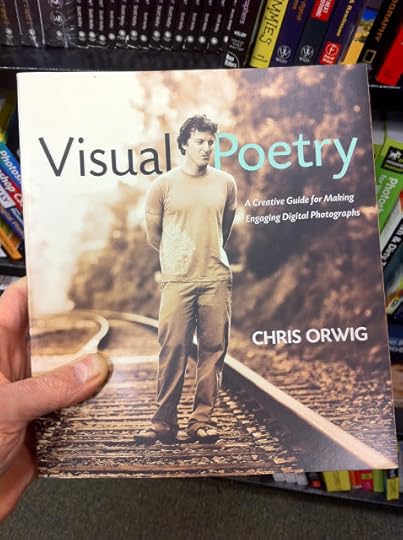Defining "Visual Poetry"

I was standing in a bookstore about a week ago when I discovered the meaning of "visual poetry." Until that time, it had escaped me, but suddenly I knew.
Or not.
Or I knew one definition. Maybe not even a definition that formed a clear lemma, maybe not an accepted use of the term. But what would "accepted" even mean in this case? I've found enough uses of the term "visual poetry" in the world of cinema and photography to have to consider this a reasonably standard use of the term. Just as "poetry" is meant to mean anything particularly beautiful, even though poetry itself is usually considered boring nowadays. The meaning and use of the poem fight against its meaning and use.
Of course, language is various and indistinct. Terms and individual terms are often polysemous, carrying multiple meanings with grace and only a modicum of confusion and still allowing for communication and the extra benefit of paronomasia.
And how is meaning made? As I always say, but I base this only on the facts of linguistic life and the clear agreement of linguists, meaning is something achieved by consensus usually forged under the natural practice of speaking and writing. Because sequences of shapes and sounds have no natural meaning; meaning is affixed to them by human practice.
The human practice of communicating.
For that reason, language is messy, illogical, given to contradictions, and human, thus perfectly usable.
I accept many definitions for the term "visual poetry," even those that seem to (but really cannot) deny the fact that visual poetry need not include words at all, need not (in fact) even contain letters. How can this be? Simply by the fact that the physical facts of life change faster than words do and by the fact that we live quite gracefully without multifarious distinctions for subtle varieties of things. And sometimes we do not, and sometimes there are such distinctions. But it matters not if there are multiple distinctions or not. We live with either fact. Distinctions arise when there is consensus that such distinctions are needed. Sometimes, such a consensus is general and affects the speakers of the language in general and sometimes it is specific and affects only the experts.
(I am reminded at this point by the rich vocabulary of botanists and the lack of need most of see to know what an aril or a botanical key is. "Seed" suits most of us just fine. Just as most of us live full and meaningful lives without knowing that the "flowers" of the flowering dogwood are not flowers but bracts.)
Enjoy the language. If it is messy and inexact. If it is neat and precise. But remember that language only works when two or more people agree that it does.
As I like to say, I call visual poems "poems," but that is just a short form, another meaning of "poem." They are not poems but visual poems. Tone poems are not poems they are poems. Visual poems are sometimes beautiful movies and photographs too.
ecr. l'inf.
Published on January 23, 2011 20:55
No comments have been added yet.



